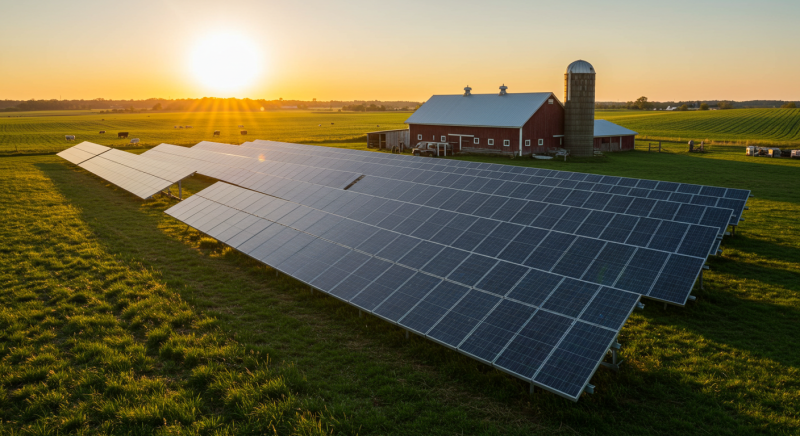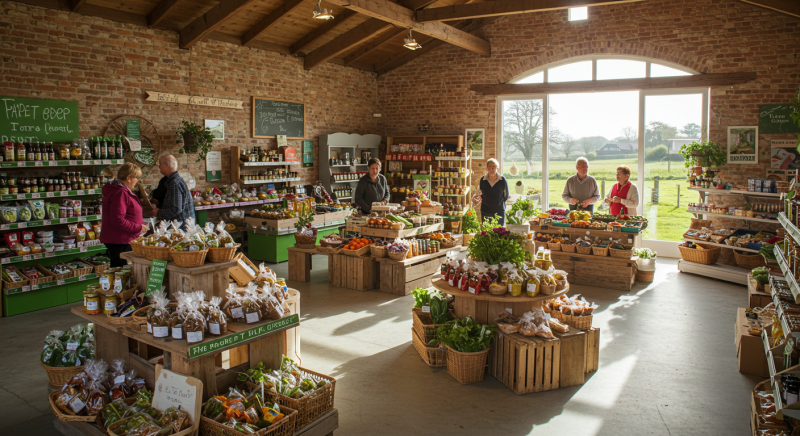Are you a farmer or rancher looking to secure financial support for your agricultural projects but unsure where to start? With rising operational costs and evolving industry demands, understanding the funding options for farmers in the USA is more critical than ever. This guide combines breaking news and actionable steps to help you navigate grants, loans, and programs designed to empower your farm’s growth and sustainability.
Key Takeaways
- Federal grants like the USDA’s Rural Energy for America Program (REAP) and Value-Added Producer Grants (VAPG) offer substantial funding for renewable energy, marketing, and innovation.
- State-specific programs such as Sustainable Agriculture Research and Education (SARE) grants address regional agricultural challenges.
- Private and community grants, including the Brighter Future Fund and Chipotle’s Local Farmer Grant Program, prioritize sustainability and equity.
- Farm loans and SBA-backed financing provide alternatives if grants aren’t feasible.
USDA Allocates $14.4 Million for Urban Agriculture
In January 2025, the U.S. Department of Agriculture (USDA) announced a 14.4millioninvestmentinurbanagricultureandinnovativeproduction.Thisincludes2.5 million for Urban Agriculture and Innovative Production (UAIP) grants, which fund community gardens, nonprofit farms, and projects that boost local food systems in economically distressed areas.
Applications for these grants are open until March 10, 2025, via Grants.gov. Additionally, $11.9 million will fund Urban Agriculture Conservation Extension Educators to provide technical assistance in 27 cities nationwide. This initiative underscores the USDA’s commitment to addressing food insecurity and supporting climate-smart practices in urban settings.
How to Secure Funding Options for Farmers In The USA: A Step-by-Step Guide
1. Explore Federal Grant Opportunities
The federal government remains the largest source of funding options for farmers in the USA. Key programs include:
- Rural Energy for America Program (REAP): Offers grants covering 25–50% of costs for renewable energy systems (e.g., solar panels) or energy-efficient upgrades. Eligible farms must be in rural areas with populations under 50,000.
- Value-Added Producer Grants (VAPG): Provides up to $250,000 for projects that transform raw products into value-added goods (e.g., turning tomatoes into sauce). Priority is given to beginning and socially disadvantaged farmers.
- Specialty Crop Block Grants: Supports farmers growing fruits, vegetables, and nursery crops through state-administered funds for marketing and research.
For detailed eligibility criteria, visit the USDA Grants and Loans portal.
2. Leverage State and Regional Programs
State-level funding options for farmers often align with local agricultural priorities. For example:
- Sustainable Agriculture Research and Education (SARE) Grants: Divided into four U.S. regions, these grants fund projects like pest management and soil health. Western SARE, for instance, offers up to $29,000 for collaborative farmer-led initiatives.
- Urban Agriculture Cost-Share Programs: States like Missouri provide grants for urban farms to develop business plans or community gardens.
Check your state’s Department of Agriculture website for tailored opportunities.
3. Apply for Private and Community Grants
Private organizations and corporations are increasingly stepping up to support farmers:
- Brighter Future Fund: Administered by American Farmland Trust, this program awards up to $10,000 for projects improving farm viability or adopting regenerative practices, prioritizing BIPOC, LGBTQ+, and women farmers.
- Chipotle’s Local Farmer Grant Program: Partners with Local Line to donate funds to farms near new restaurant openings, emphasizing sustainability without a formal application process.
- Fund-a-Farmer Grants: Focused on animal welfare, these grants fund fencing, shelters, and water systems for certified humane farms.
4. Consider Loans as a Flexible Alternative
If grants are unavailable, explore low-interest loans:
- Farm Service Agency (FSA) Loans: Direct and guaranteed loans for land purchases, equipment, and operating costs.
- SBA Loans: Government-backed options like the 7(a) loan offer up to $5 million with extended repayment terms.
Alternative Financing and Private Sector Involvement
While government-backed loans remain a critical resource for many, alternative financing channels have gained traction among innovative farming enterprises. Private lending institutions, agricultural co-operatives, and community-based funding sources offer additional avenues for financing. The diversity of funding sources has not only increased the overall accessibility of capital but also allowed for more competitive loan terms and flexible repayment structures. Farmers who explore these alternatives often find that tailored financing solutions contribute significantly to reducing financial risk and increasing operational sustainability. Access to private sector funding is constantly evolving through new partnerships and technology-driven financial platforms, ensuring that modern farming strategies remain dynamic and adaptive in a competitive market. For further details and current initiatives, consider exploring resources at farmcreditnetwork.com.
Extended Insights and Fact-Based Analysis
Statistical evidence shows that improving access to agricultural funding correlates directly with increased productivity and sustainable practices. Recent studies have highlighted that farms which secure timely financing experience faster adaptation to new technologies and higher crop yields.
In a rapidly changing economic environment, Funding Options for Farmers in the USA continues to be relevant as a tool not only for financial support but also for promoting long-term rural development and economic resilience. These analytical insights underscore the importance of well-informed financial planning and thorough research when pursuing funding opportunities. Keeping abreast of market trends through trusted news outlets and governmental updates ensures that farmers have access to the most accurate and actionable funding information available
Conclusion: Building a Financially Resilient Farm
Navigating funding options for farmers in the USA requires diligence, but the rewards—financial stability and growth—are worth the effort. Stay updated on deadlines, tailor applications to grant priorities, and leverage local resources like USDA service centers. By combining federal, state, and private funding streams, you can secure the support needed to thrive in 2025 and beyond.
Frequently Asked Questions (FAQ)
Q: Are there grants for new farmers?
A: Yes! Programs like the Beginning Farmer and Rancher Development Program and the Young Farmer Grant Program offer funding and mentorship for those in their first decade of farming.
Q: Do farm grants need to be repaid?
A: Most grants, like USDA REAP or VAPG, do not require repayment if used as outlined in the proposal.
Q: What if I don’t qualify for a grant?
A: Explore FSA loans, equipment financing, or SBA microloans. The USDA’s FarmRaise platform also aggregates funding opportunities.
Q: How long does it take to receive grant funds?
A: Processing times vary. For example, EQIP grants take 3–9 months, while private grants like the Brighter Future Fund disburse within 60 days of approval.
Q:What are the primary Funding Options for Farmers in the USA?
The funding options available include government loans from agencies like the USDA, state-financed programs, as well as private lending and alternative financing channels that provide customized solutions based on individual farm needs.
Q:How do I apply for government-backed loans?
A:Farmers can apply by accessing the application portals of federal and state agencies, where detailed guidelines on eligibility, documentation, and submission processes are provided. Visiting usda.gov is a helpful starting point for the latest application details.
Q:Are there alternatives if I do not qualify for traditional loans?
A:Yes, there are many alternative financing options available through private lenders, agricultural cooperatives, and community-based funds that cater to diverse financial profiles and specific farming operations.
Q:Can these funding options help in advancing sustainable and innovative farming practices?
A:Absolutely, funding options not only provide the necessary capital but also support the adoption of new technologies and sustainable practices, which are increasingly essential in today’s farming environment.
Q:How frequently are these funding programs updated?
A:Funding programs are updated regularly by federal and state bodies to address changing economic conditions and to better serve the agricultural community. It’s advisable to check official sources frequently for the most current updates.



